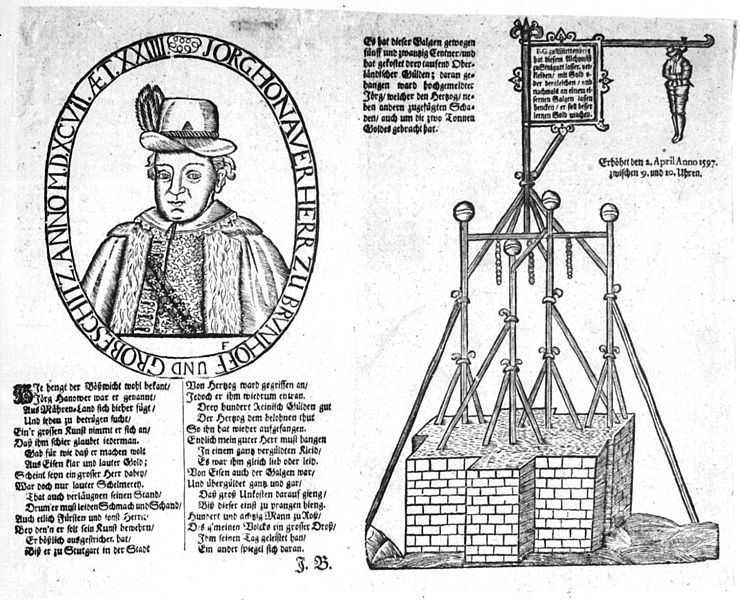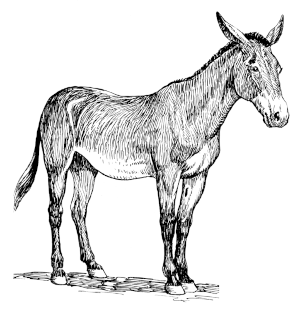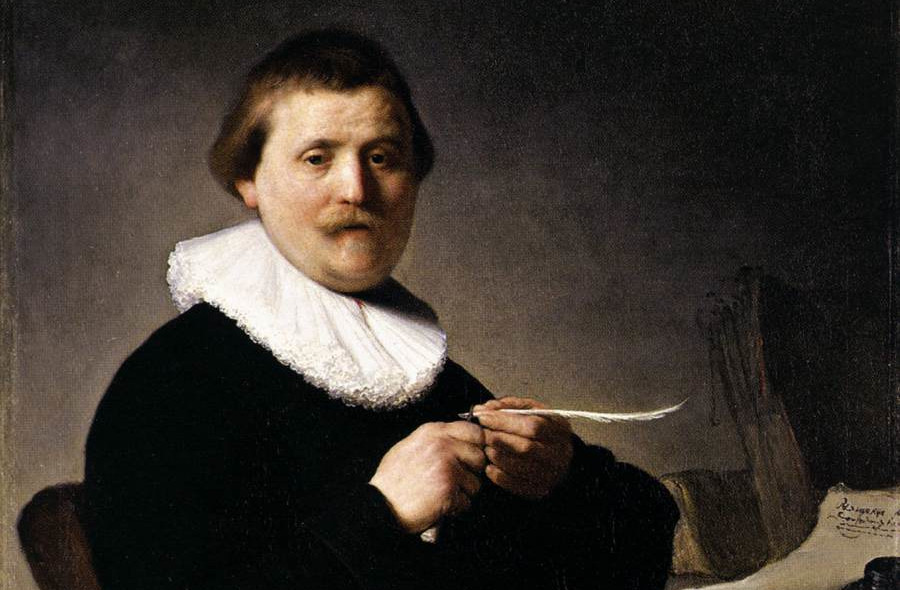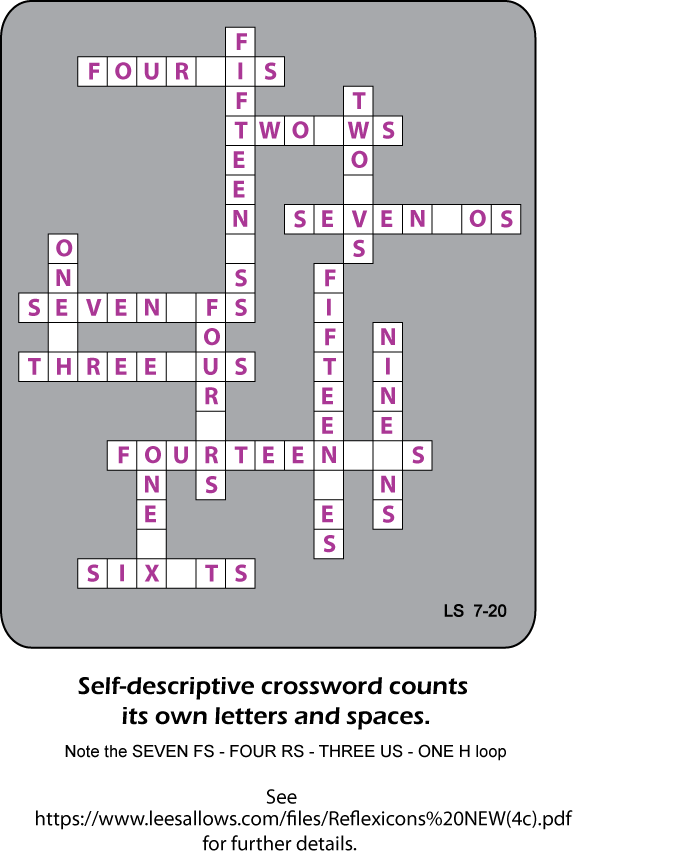Glenn Gould composed this piece for the Canadian TV program The Anatomy of Fugue in 1963.
Object Lesson

When alchemist Georg Honauer (1572-1597) claimed he could convert iron into gold, Duke Friedrich I of Württemberg ordered all the iron in his Mömpelgard armory conveyed to Stuttgart for a demonstration. Honauer panicked and fled but was extradited back to town, where, according to this contemporary woodcut, he was dressed in a gilded garment and hanged on a gilded gallows.
The anonymous printer concludes, er soll besser lernen Gold machen — “he should learn how to make gold better.”
(Thanks, Charlie.)
In a Word
aegritude
n. an instance of sickness
Utah senator Jake Garn got so comprehensively ill on the space shuttle Discovery in 1985 that he’s remembered in the Garn scale, an informal measure of space sickness. Astronaut Robert Stevenson recalled:
Jake Garn was sick, was pretty sick. I don’t know whether we should tell stories like that. But anyway, Jake Garn, he has made a mark in the Astronaut Corps because he represents the maximum level of space sickness that anyone can ever attain, and so the mark of being totally sick and totally incompetent is one Garn. Most guys will get maybe to a tenth Garn if that high. And within the Astronaut Corps, he forever will be remembered by that.
Garn said, “I’ve been very proud of the fact that they named something after me after all these years, even if it was unofficial.”
Beyond the Call

Dubious but entertaining: After the Battle of Wauhatchie on the night of October 29, 1863, rumors circulated that Confederate troops had retreated in the darkness because they’d mistaken a stampede of mules for a cavalry charge. Someone wrote a “Charge of the Mule Brigade,” and the Union quartermaster reportedly asked that the gallant mules “have conferred upon them the brevet rank of horses.”
But there are no Southern reports of a mule attack at Wauhatchie, and one Confederate combatant categorically denied the story when it appeared in Grant’s memoir. At best, it appears, some mules broke loose and caused enough confusion to permit the 137th New York Infantry to arrive and oppose the rebels.
“The exact details of whatever the mules did at Wauhatchie will never be precisely known,” writes historian Gene C. Armistead in Horses and Mules in the Civil War (2013), “but the story is too humorous and too good to abandon.”
An Odd Request

A puzzle by Polish mathematician Paul Vaderlind:
Is it possible to arrange 25 whole numbers (not necessarily all different) so that the sum of any three successive terms is even but the sum of all 25 is odd?
Turnabout
Vladimir Nabokov’s 1962 novel Pale Fire includes a character named John Shade, a poet who writes the lines
Space is a swarming in the eyes; and time,
A singing in the ears.
In the first edition of his 1964 book The Ambidextrous Universe, Martin Gardner quoted these lines and, as a joke, credited them to Shade rather than Nabokov, listing Shade in the index.
Nabokov, in turn, in his 1969 novel Ada or Ardor: A Family Chronicle had a character quote Gardner’s book and the same two lines of verse:
‘Space is a swarming in the eyes, and Time a singing in the ears,” says John Shade, a modern poet, as quoted by an invented philosopher (‘Martin Gardiner’) in The Ambidextrous Universe, page 165.
Gardner’s book concerns symmetry, and Ada is a palindrome; further, the action in that novel takes place on Anti-Terra, a sort of mirror image of Earth. Nabokov’s 1974 novel Look at the Harlequins!, also influenced by Gardner’s book, concerns a man who can’t distinguish left from right.
(Thanks, Jeff.)
Matter

A great portrait is always more a portrait of the painter than of the painted. When we look at a portrait by Holbein or Rembrandt it is of Holbein or Rembrandt that we think more than of the subject of their picture. Even a portrait of Shakespeare by Holbein or Rembrandt could tell us very little about Shakespeare. It would, however, tell us a great deal about Holbein or Rembrandt.
— Samuel Butler, Notebooks, 1912
Inventory
The King’s Salary
A little kingdom contains 66 people, a king and 65 citizens. Each of them, including the king, has a salary of one gold piece. When democracy comes, the king is denied a vote, but he has the power to suggest changes, in particular regarding the redistribution of salaries. The salaries must total 66, and each salary must be a whole number of gold pieces. The citizens will vote on each suggestion, which will pass if more citizens vote for it than against it. Each voter will reliably support a measure if it will increase his salary, oppose it if it will decrease his salary, and otherwise abstain from voting.
The king is greedy. What’s the highest salary he can arrange for himself?
Piece Work

Now this last example is very interesting. What happened when Christ broke the bread at the Last Supper? He broke a thing into fragments. But each piece contained the whole: that is, his entire body. And, again, what happens if the Host, after it has been consecrated by a priest, falls to the floor of the church and crumbles, and if a mouse then eats the crumbs? Does the mouse eat Christ’s body? I do not wish to develop this argument, merely to remind you that this was one of the arguments used by Protestant reformers to ridicule Catholic practice.
— Jacqueline Lichtenstein, “The Fragment: Elements of a Definition,” in William Tronzo, ed., The Fragment: An Incomplete History, 2009

